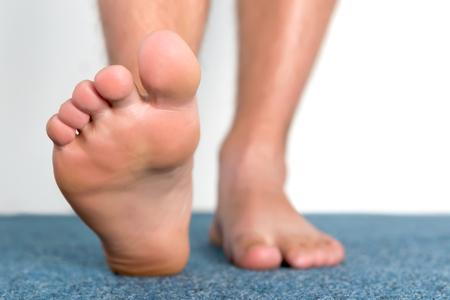
When you’ve got adult-acquired flat feet, whether it be from Posterior Tibial Tendon Dysfunction (PTTD), Arthritis, Injury, Obesity or Charcot Foot from Diabetes, the symptoms can really affect your daily life. Foot pain can affect mobility and mood, especially due to the pain. Standing or walking for long periods of time, as well as vigorous exercise can make the pain worse. Compounded with the fact that some can develop bony spurs or swelling, flat foot deformities are no walk in the park (at least not a long one, anyway).
So what can you do about it?
Treatment: Treating adult-acquired flatfoot deformity depends on the stage at which it is noticed or diagnosed.
Stage I: Inflammation, swelling, and pain near the inside of the ankle. A fallen arch may not necessarily be visible.
- At this stage, rest and immobilization is best to relieve and prevent worsening of pain. You should wear supportive shoes with arch and heel support so that your feet do not have to strain to keep you stable. Orthotics can help to relieve symptoms and also prevent progression of flattening feet.
Stage II: If it only affects one foot, the arch in that foot will be more visibly flat. The arch may still be flexible, and the arch may reform when the heel is lifted.
- In Stage II, the tendon may be stretched, loosening and flattening the arch. In order to relieve symptoms, you may need immobilization in a cast, custom- orthotic shoes, a brace, and/or physical therapy treatment. Pain relief may require anti-inflammatory treatment, such as NSAIDs (non-steroidal anti-inflammatory drugs) and applying ice to the affected areas.
Stage III: The affected feet have rigid flat arches, which do not reform when heels are lifted. The ankle may be pronated, putting pressure toward the inside of the foot. The outside of the ankles may be strained and feel painful.
- In Stage III, the deformity is usually severe and the feet can be visibly misshapen. An immobilization boot, followed by orthotics and a brace can help to reduce initial symptoms, but if they do not fix the problem, you may need surgery. Early Stage III treatment might include soft-tissue procedures like ligament lengthening or tendon transfers, but later Stage III treatments can require bone and/or joint fusions.
The best way to find out what treatments would work best for you would require a consultation with our board-certified podiatrist, Dr. Brad Toll at Crofton Podiatry. Make an appointment by calling (410) 721-4505. Dr. Toll will be able to properly diagnose the stage of your adult-acquired flatfoot deformity, as well as determine the best solution for your foot pain. Our team is ready to assist you at our Crofton, MD office, which also serves the surrounding areas of Gambrills, Odenton, and Bowie areas.
